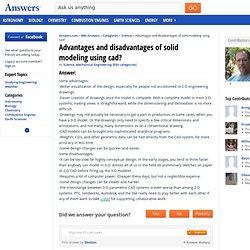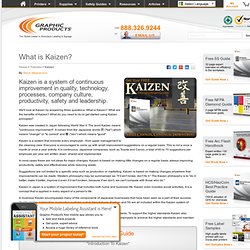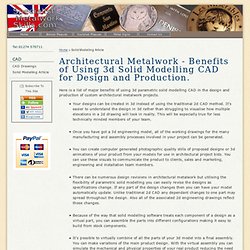

Product Design Revision - (Ergonomics and Anthropometrics) - 1. Qualitative vs Quantitative. Corpus analysis can be broadly categorised as consisting of qualitative and quantitative analysis.

In this section we'll look at both types and see the pros and cons associated with each. You should bear in mind that these two types of data analysis form different, but not necessary incompatible perspectives on corpus data. Qualitative analysis: Richness and Precision. The aim of qualitative analysis is a complete, detailed description. No attempt is made to assign frequencies to the linguistic features which are identified in the data, and rare phenomena receives (or should receive) the same amount of attention as more frequent phenomena. The main disadvantage of qualitative approaches to corpus analysis is that their findings can not be extended to wider populations with the same degree of certainty that quantitative analyses can. The Advantages of Rapid Prototyping. The Disadvantages of Rapid Prototyping. Advantages and disadvantages of solid modeling using cad. Some advantages: -Better visualization of the design, especially for people not accostomed to 2-D engineering drawings.

-Easier creation of drawings once the model is complete. With a complete model in most 3-D systems, making views is straightforward, while the dimensioning and delineation is no more difficult. -Drawings may not actually be necessary to get a part in production, in some cases, when you have a 3-D model. Or the drawings only need to specify a few critical dimensions and annotations, and not many, many dimensions as on a conventional drawing. -CAD models can be brought into sophisticated analytical programs. -Weights, CG's, and other geometric data can be had directly from the CAD system, for more accuracy in less time.
What is detailed design? what are the advantage disadvantages using it. Primary and secondary research. Home > Design and Technology > Designing and Producing > Project Development and Realisation > Primary and secondary research Designing and producing Primary and secondary research There is a variety of of research methods that you can use when developing your design projects.

These may assist you in the investigation stage of a Preliminary course design project or for your Major Design Project (MDP). Not all of the methods may be suited to your project. Outcomes This material addresses aspects of the following syllabus outcomes: P5.2 The student communicates ideas and solutions. Source: Board of Studies NSW, Stage 6 Design and Technology Syllabus, Preliminary and HSC Courses (2007)
Kaizen. By Steve Stephenson Kaizen is a system of continuous improvement in quality, technology, processes, company culture, productivity, safety and leadership.

We'll look at Kaizen by answering three questions: What is Kaizen? What are the benefits of Kaizen? What do you need to do to get started using Kaizen principles? Kaizen was created in Japan following World War II. Kaizen is a system that involves every employee - from upper management to the cleaning crew. In most cases these are not ideas for major changes. Suggestions are not limited to a specific area such as production or marketing. Kaizen in Japan is a system of improvement that includes both home and business life. In business Kaizen encompasses many of the components of Japanese businesses that have been seen as a part of their success. Kaizen involves setting standards and then continually improving those standards. More information about Kaizen: Innovation Infrastructure. Table of Contents (click on blue hyperlinks) toc.

Seven benefits of using 3d solid modelling CAD in the design and manufacture of Architectural Metalwork. Home > Solid Modelling Article Here is a list of major benefits of using 3d parametric solid modelling CAD in the design and production of custom architectural metalwork projects.

Your designs can be created in 3d instead of using the traditional 2d CAD method. It's easier to understand the design in 3d rather than struggling to visualise how multiple elevations in a 2d drawing will look in reality. This will be especially true for less technically minded members of your team. Once you have got a 3d engineering model, all of the working drawings for the many manufacturing and assembly processes involved in your project can be generated. CH Designs is a UK based company designing and manufacturing custom architectural metalwork for the building conservation industry. MindSights.